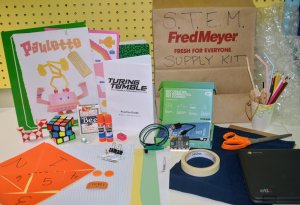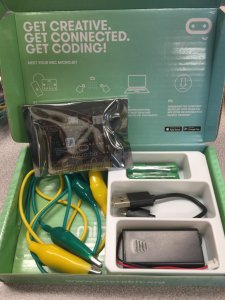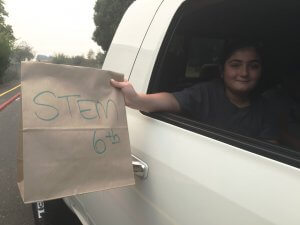STEM kits deliver tech learning opportunities to students’ homes
 Laurin Middle School teacher Diana Sterle is a firm believer in active learning. In her STEM class (science, technology, engineering, and math), students use their hands and creativity to make an array of drawings and 3-D objects to learn about concepts such as coding, scaling, design, and solving problems using logic and step-by-step instructions. Even though students are learning remotely to start the school year, Sterle’s class will still be taking advantage of hands-on learning thanks to the distribution of take-home STEM kits.
Laurin Middle School teacher Diana Sterle is a firm believer in active learning. In her STEM class (science, technology, engineering, and math), students use their hands and creativity to make an array of drawings and 3-D objects to learn about concepts such as coding, scaling, design, and solving problems using logic and step-by-step instructions. Even though students are learning remotely to start the school year, Sterle’s class will still be taking advantage of hands-on learning thanks to the distribution of take-home STEM kits.
These STEM kits include items like graph paper for charting coordinates; items for simple engineering projects like cardstock, straws, popsicle sticks, rubber bands and paper clips; Rubik’s Cubes to teach problem solving and logic building; marbles and cardboard for building marble runs; and decks of cards for lessons about probability and randomness. And of course, Battle Ground Public Schools students have the use of their district-issued Chromebooks for accessing a variety of apps and online learning resources to further their STEM education.
 The STEM kits being distributed at Laurin are just one example of how teachers from all across the district are helping to deliver classroom learning to students’ homes. Teachers and staff have been busy early this semester assembling take-home supply kits for art, woodshop, music, and more
The STEM kits being distributed at Laurin are just one example of how teachers from all across the district are helping to deliver classroom learning to students’ homes. Teachers and staff have been busy early this semester assembling take-home supply kits for art, woodshop, music, and more
“It’s been great figuring out ways for students to do STEM projects in their own homes,” said Sterle. “By providing students with kits containing the same learning materials, it equalizes accessibility so everyone can work together, even though we’re physically separated for the time being.”
The kits also include a device called the Micro:Bit. About half the size of a credit card, the Micro:Bit was designed by the British Broadcasting Corporation (BBC) to encourage children to get actively involved in writing software for computers and building new things. The Micro:Bit device has an accelerometer and magnetometer sensors, Bluetooth and USB connectivity, a 25-LED display, two programmable buttons, and can be powered by either USB or an external battery pack. Sterle’s students will use their Micro:Bits to learn about block coding, Javascript, and Python coding languages.
One of Sterle’s learning units this semester focuses on graphic design, and her class will be creating infographics about tech skills that are designed to be easily shareable between students. Sterle says the goal is to make distance learning a bit easier for everyone by sharing helpful tips and tricks for navigating online learning. No matter what project the students are working on, the focus is always on learning the four C’s: creativity, collaboration, communication, and critical thinking.
 Throughout the school year, Sterle’s classes will also be meeting virtually with regional professionals who work in STEM careers so students can hear firsthand about what their jobs are like.
Throughout the school year, Sterle’s classes will also be meeting virtually with regional professionals who work in STEM careers so students can hear firsthand about what their jobs are like.
“One of the great things about STEM is that all current and future career paths are connected in some way to science, technology, engineering, or math,” Sterle said. “By introducing my students to broad concepts, they begin to build a foundation of skills that lead to future success no matter what field they end up working in.”




 11104 N.E. 149th Street,
11104 N.E. 149th Street,